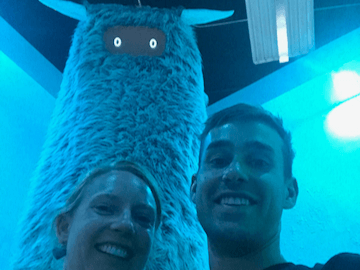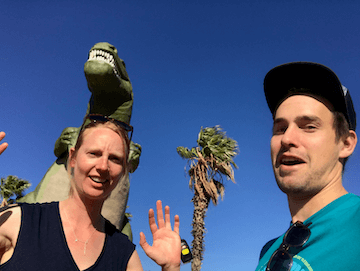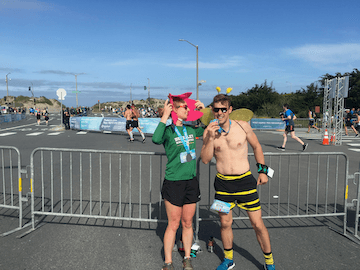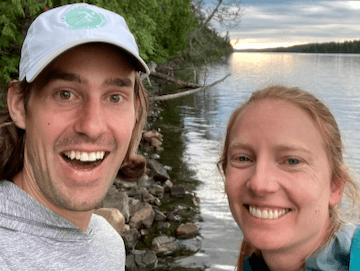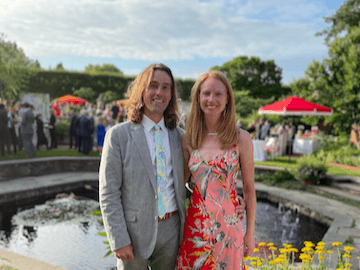As a geologic feature, the bay is the youngest thing in
sight - younger than the rivers that feed it. During the
glacial pulses of the Pleistocene (plai·stuh·seen), where
much water rested on the continents as ice, sea level was
lower than it is now by a couple of hundred feet, and
shorelines worldwide were far outboard of present beaches…
The Sacramento-San Joaquin went out through the Golden
Gate and forty or fifty miles west before it emptied into
the sea. When the ice melted, the sea came up and… drowned
the Sacramento-San Joaquin from the Golden Gate through
the Coast Ranges and into the Great Central Valley,
filling the Bay Area’s bays...
Not just any city can claim to have formed in a trench
where the slab of a great ocean dived towards the center
of the earth, where large pieces of varicolored country
came together, and where competent rock was crushed to
scaly clay. After the churning stopped and the whole
mixture was lifted into the weather, the more solid chunks
very soon stood high and the softer stuff washed down…
South of the south pier [of the Golden Gate Bridge], we go
down a steep trail to the Pacific beach that comes up from
Point Lobos. There are serpentine outcrops above the beach
- large blocky hunks in the scaly Franciscan matrix. The
closer we come to the pier of the bridge, the more
serpentine we see. “… The seamount, with this serpentine
as a basement, is a really far-travelled piece. It’s old
and equatorial. It began life way out in the central
ocean. What a pile of hash-mash to build a bridge on!” The
serpentine is massive, soft and soapy, threaded with
asbestos, and below the great bridge it stands up in
cliffs. In high positions are concrete gun emplacements
built of five-inch pillar-mounted rifles, for six-inch
disappearing rifles. There are nudes on the beach. Other
men on the beach are sitting upright in little pillboxes
that shelter them from the wind. The traffic on the bridge
hammers the expansion joints and sounds like the firing of
distant guns.
In sections more than a mile wide, the serpentine
traverses San Francisco from the Golden Gate Bridge to the
old naval shipyard on the bay. It underlies all or parts
of the Presidio, the University of San Francisco, the
Civic Center, Mission Dolores, Haight-Ashbury, Pacific
Heights, Hayes Valley, Bay Shore. Potrero Hill is
serpentine...
Francis Drake, the English pirate, two years shy of being
knighted by the queen, spent the winter of 1579 camped
beside a Pacific beach close to the base of Mt. Tamalpais.
Neither he nor anyone in his crew went up the mountain to
look around, to discover the three hundred and fifty
square miles of protected water close to their encampment.
The probable explanation is fog: the cold and almost
quotidian sea fog that will overlap the coastal land when
the air of California is otherwise cloudless; the fog that
fosters the growth and survival of redwoods; the fog that
conceals the Golden Gate Bridge and brings out the sound
of tubas.
In the summer and fall of 1769, sixty-four Spanish
soldiers walked north four hundred miles from San Diego in
search of Monterey Bay. Having no more to go on than a
navigator’s description a hundred and sixty-six years old,
they failed to recognize Monterey Bay; and they kept
walking, another hundred miles, until they came up against
a large coastal mountain. On a clear day they climbed it….
The soldiers... looked out upon a confused topography of
deep swales, creased gullies, and high dunce-cap hills.
The hills were all but treeless. They were matted with
bush monkeyflowers, wooly painted cups, coffeeberries,
Christmasberries, bush lupine, and poison oak. In the
swales and gullies were wax myrtle, arroyo willows, coast
live oaks, creek dogwood. Large parts of the future city
were covered with marching dunes, restrained by dune
tansy, coyote shrubs, and sand grass.








